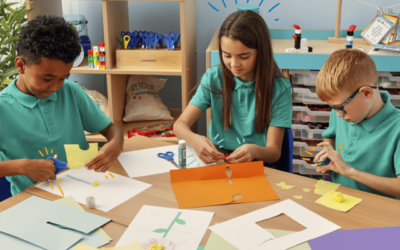Working with Autistic children and creating a friendly space
Working with autistic children and creating an autism-friendly setting can seem like a daunting prospect when you first begin, but with the right resources and know-how, it is easier and more fun than you may have thought!
Developing strategies for autistic children in your classroom or Early Years setting will increase children’s independence and chances of success as well as boosting levels of wellbeing and involvement.
Carefully planning your autism-friendly space in this way won’t just benefit those children on the spectrum, but will have positive benefits for all the children in your class, including others with different special educational needs.
Start to plan your space
Stand at the door of your setting and imagine how your autistic children may wish to access resources. Where do they generally head first? Do they like to access provision in a specific order?
Now that you have visualised a path, remove any objects or furniture that may be in the way and make sure favoured areas are as far away from additional sensory stimulation as possible. This might mean using furniture to create partitions or increase a feeling of privacy, or relocating areas so that they are away from bright lights, windows, radiators or doorways.
Create a calm environment
Calm and neutral early years environments are all the rage right now and with good reason – they create a sense of safety and comfort while allowing children to focus on the task at hand. Calm and uncluttered classrooms are particularly important for autistic children who may become easily distracted or overstimulated by too much mess or a large number of resources.
Try these tips to help you pare back your space:
- Avoid using brightly coloured backing paper or borders on displays and try to only show children’s work rather than adding in extra details to make the display look ‘pretty.’
- Try not to hang anything from the ceiling of your space. This can be incredibly distracting for children and is often too high for them to see properly anyway!
- If you can, paint the walls and ceiling in a neutral colour and avoid lots of brightly coloured or patterned rugs/carpets.
- Use lamps so that you don’t always have to have the fluorescent overhead lights switched on. If you can’t use lamps for safety reasons, try to only switch on the classroom lights when absolutely necessary.
- Don’t use background music. Music in the classroom can help to create a lovely atmosphere for many children but for those who get easily overstimulated, it may make them feel uneasy or stressed.
The best sensory toys for autism
Creating an uncluttered space doesn’t mean that you can’t include lots of interesting resources. Children on the autistic spectrum will enjoy accessing toys and learning equipment just as much as other children in your class.
When setting out your resources, try to limit the number of items available to choose at any one time. Using open shelving with labelled baskets or containers can really help children to be able to zone in on what they would like to play with and makes tidying up a lot more easy too!
Here are some of our top picks for resources for an autism-friendly space:
Water tray – The adjustable height of this water tray means it is suitable for children of multiple ages, as well as those in wheelchairs.
Gonge spinning top – Children will love the way that this spinning top stimulates their vestibular sense.
Gonge wheel large – Children can roll inside or top of this wheel, as well as pushing it to watch it move.
Passive bubble tube – This sensory bubble tube would make the perfect addition to a sensory den or calm corner.
Odd ball set – These balls can be bounced, thrown, squashed or squeezed to provide sensory feedback and fun.
Create a calm corner
Now you have chosen your favoured sensory toys and resources and created a calm and inviting classroom, you may like to think about the addition of a calm corner.
Calm corners are often used by autistic children when they are experiencing a meltdown as a result of sensory overload and can be a very useful tool in helping them to regulate their emotions.
Make sure you situate your calm corner in a quiet area of the classroom, free from distractions or too much noise. Create a feeling of safety by using furniture to partition the space and close it off from the main classroom area.
You might like to provide:
- A soft place to sit or lie
- Headphones
- A sensory light or bubble tube
- Sensory toys including those that can be squeezed or chewed
- Toys and resources geared towards the specific interest of the child
Make sure you tailor your whole classroom space to the individual needs of the autistic children in your class, speaking to parents and carers to ensure the space is adapted to suit their needs.
Related blogs
Your Guide to the School-Based Nursery Capital Grant
What is the School-Based Nursery Capital Grant? For schools aiming to enhance their nursery facilities, the School-Based Nursery Capital Grant provides a simple funding solution. This grant is open to eligible state-funded primary schools in England that...
What Goes In, Must Go Out
Creating a Circular Economy in Your Nursery Author: Nick Corlett Sustainability Manager at LEYF Sustainability is more than a trend—it’s a shared responsibility, and the nursery is the perfect place to nurture these skills. Every day...
Top tips to create a SEND-Friendly Primary School Classroom
Author Lindsay Robinson Lindsay Robinson has been a primary school teacher for 23 years and is passionate about achieving the very best outcomes for children through quality first teaching and experiences. I remember receiving very little guidance during my teacher...


